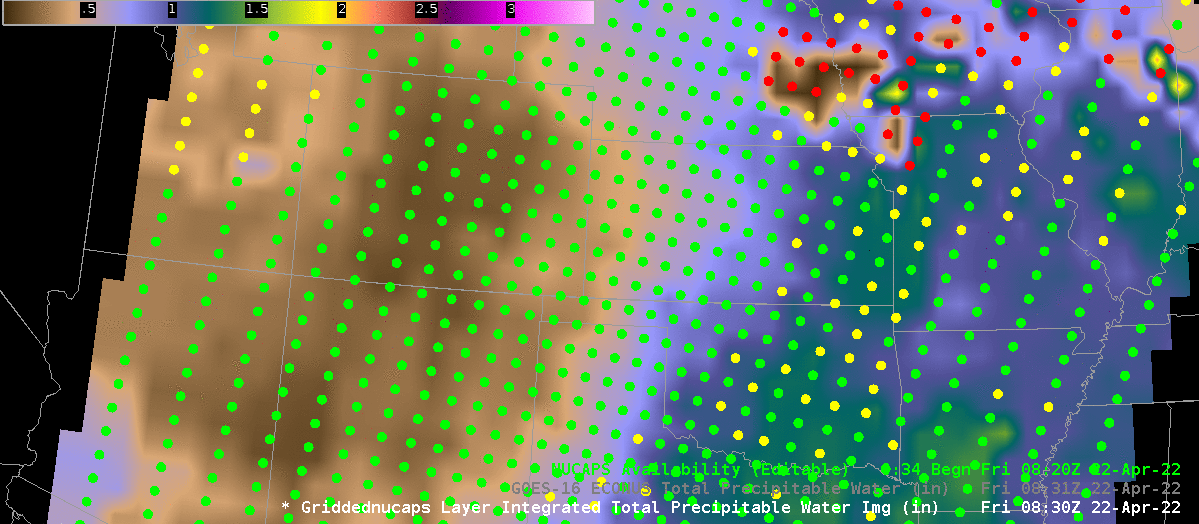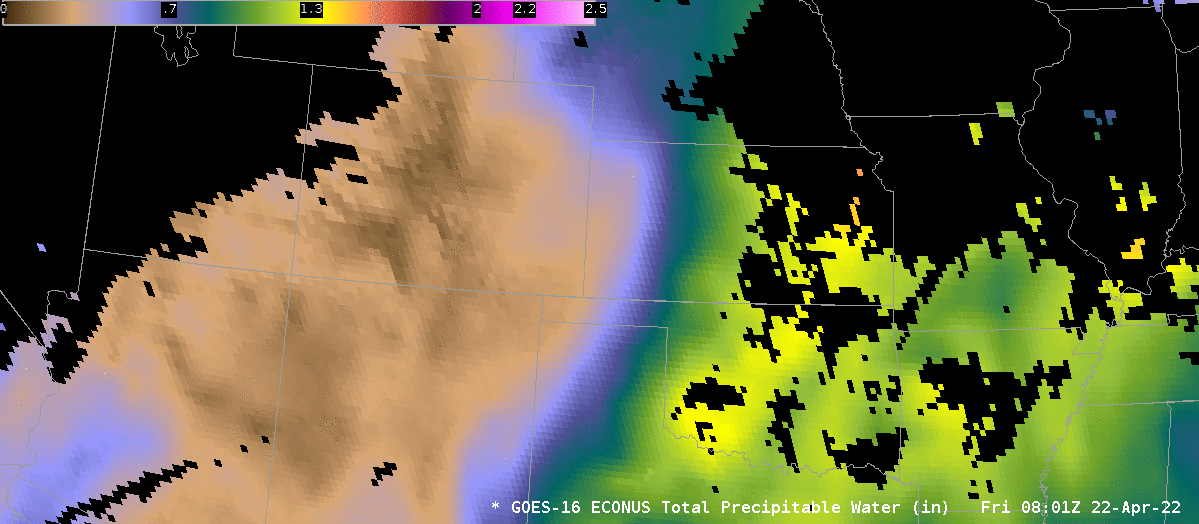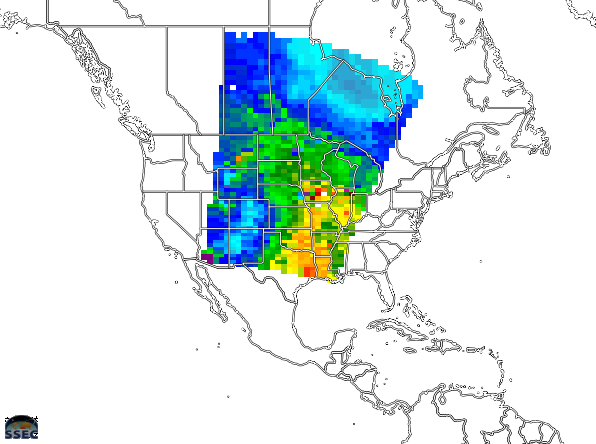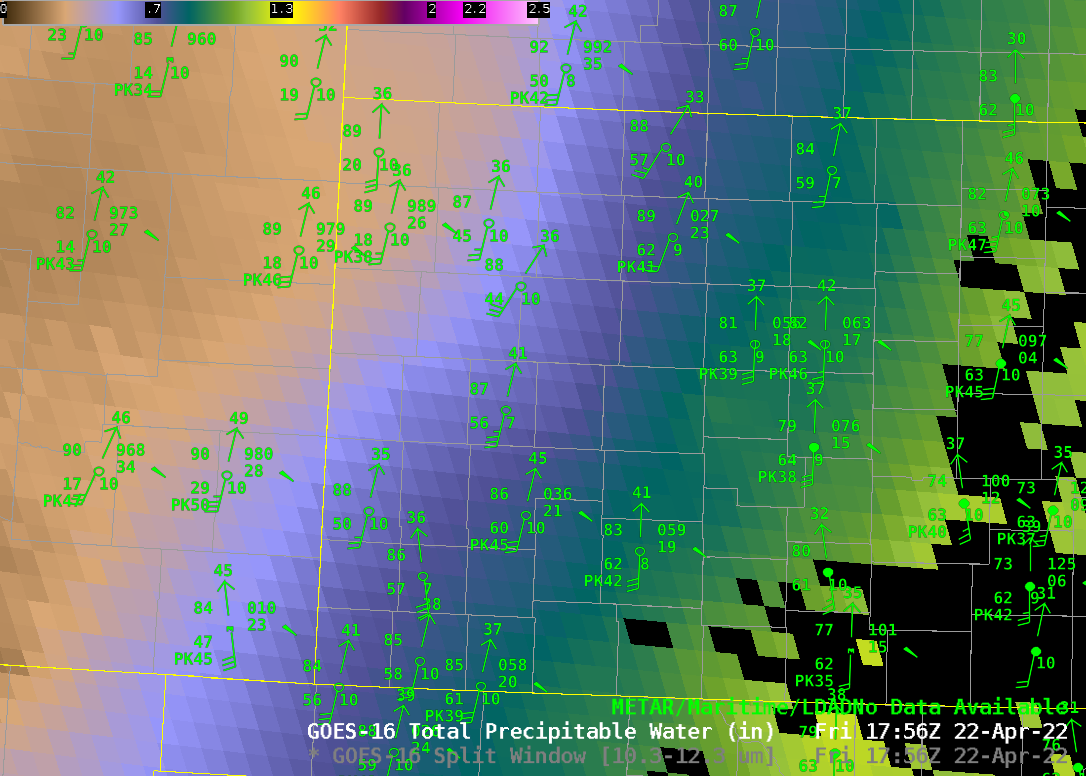Monitoring the dryline with GOES-16 and NOAA-20

A dryline over the United States High Plains will serve as a focus for convective development later in the day on 22 April. (Click here for the 1300 UTC Convective Outlook). What tools are available to view gradients of Total Precipitable Water, and how do they compare? The toggle above compares Gridded NUCAPS fields of TPW and roughly coincident GOES-16 derived Total Precipitable Water. (TPW can be viewed online here). A zoomed-in version of the image above is shown below (including an image showing NUCAPS Sounding Availability points). Note that NUCAPS gives values in regions of clouds. GOES-R has a higher spatial resolution. A user might use both to take advantage of the strengths of both sensors.

Of course, a benefit of GOES-R over NUCAPS values is that GOES-R estimates can animate. The 2-hour animation below shows a relatively stationary gradient over the High Plains from Texas northward through Kansas.

SPC Mesoanalyses at 0800 and 1000 UTC, below, similarly show a relatively stationary gradient. Perhaps the strength of the gradient is different in the analysis below compared to the satellite-based esimates above, but the different enhancements and map projections makes it difficult to make a direct comparison!

The NAM-12 image of TPW below also shows a tight gradient over the High Plains.

Gridded NUCAPS fields of TPW are also available at this RealEarth-driven site, and at this SPoRT site. The RealEarth field is shown below.


The GOES-16 Total Precipitable Water at 1716 UTC, above, is a bit less concentrated over western Kansas. The image is also toggling with the Split Window Difference (10.3 µm- 12.3 µm) enhanced such that dark regions have more moisture. No appreciable gradient in moisture that might focus convection is apparent. (The 1630 UTC Convective Outlook has not appreciably changed from 1300 UTC). Note below how well the surface dewpoint gradients and TPW gradient match!

Continue to monitor the evolving moisture distribution using the resources above as the afternoon progresses.

